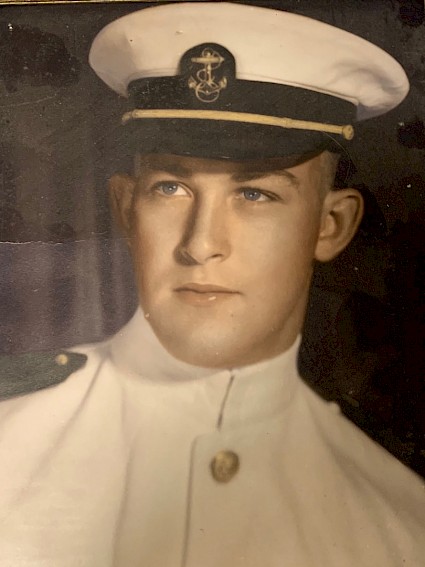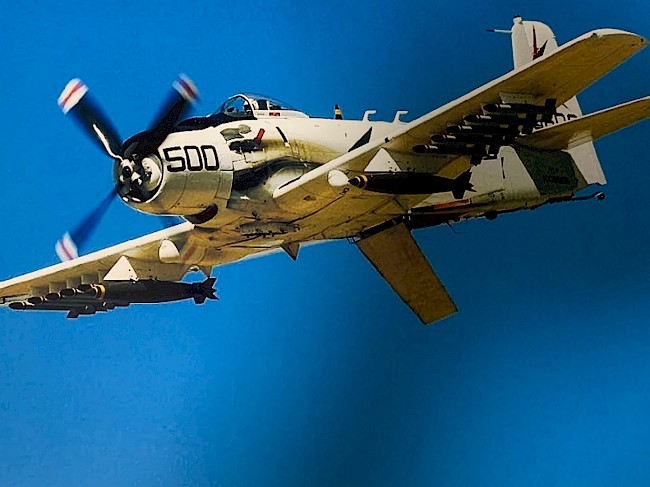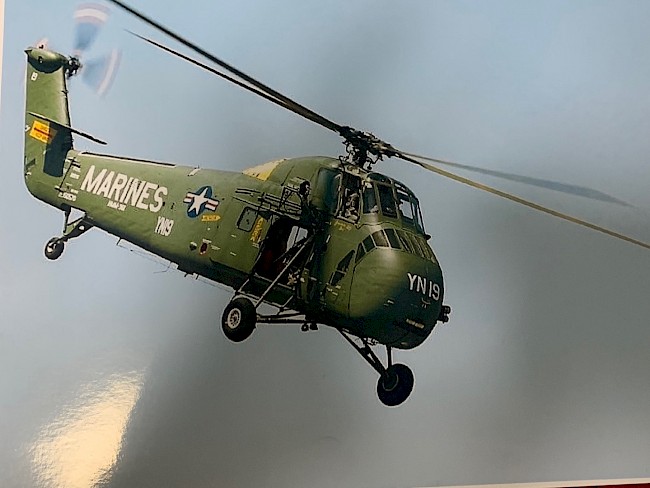A Life in the Sky

There once stood a persimmon tree behind a house in Douglassville, Texas. To the untrained eye, it just looked like a tree whose branches had been littered with junk, but not to a boy named Jim Swint. Jim was just a kid in the late 1930s and early 40s and he was obsessed with airplanes. Today, he smiles as he remembers finding an old tractor seat he wedged between the tree limbs of that persimmon tree. He says he picked up every broken and rusted gage he came across and hung it from the branches. With a few scraps and a lot of imagination, the young Swint created an airplane cockpit where he spent many hours dreaming of his future above the clouds.
After high school, Jim joined the Aggie Corp of Cadets at Texas A&M University. He loved being a member of the Corp but was not really a fan of the academic part of his higher education, he recalled with a grin. Because the Korean War was in full swing, the possibility of being drafted was very real. To have a little more control over which branch of the military he would serve in, Jim enlisted instead of waiting to be drafted. At first, his parents were not happy about his enlistment, but he promised his mom and dad that if he left college for the military, he would, at some point, return and finish his degree.
So, in March 1953, 19-year-old Jim Swint joined the US Navy. His goal was to fly navy planes and land them on aircraft carriers in the middle of the ocean. To reach that goal, he began his flight training in Pensacola, Florida. Because of the strict, military-style training regimen of the A&M Corp, the transition to the Navy was a smooth one for Jim. He said his training was “top notch” and as a young man in his late teens, he was trained to fly his favorite plane, the Skyraider. It was a propeller plane that was the first single-seat torpedo and dive bomber to serve the Navy. “I got to fly the plane of my dreams and blow stuff up.” To a 19-year-old, it was a win-win.
After flight training, Jim accepted a commission with the Marines. He traveled all over the world on aircraft carriers with a lot of other great pilots who became lifelong friends. He fondly remembers being on the USS Boxer, an aircraft carrier that was known for transporting Marines and their planes and helicopters. It was a navy ship under the command of Captain Dyer. Jim laughs and says that he vividly remembers that Captain Dyer’s wife had given her husband a very large stuffed tiger to take with him on his deployment, and by the way the captain treated the oversized stuffed animal, “you would have thought the thing was real.” Being among other military men in their teens and early twenties, boredom sometimes got the best of them out on the open sea, and as they say, “boys will be boys.” Someone (who Jim still won’t name) stole the stuffed tiger out of the captain’s quarters. “There’s a lot of room to hide things on an aircraft carrier,” said a reminiscent Jim. Captain Dyer spent months looking for his beloved tiger. He combed every inch of that ship, but the Marines, assisted by some Navy boys, were able to keep the stuffed animal hidden. The captain even held a fake trial aboard the USS Boxer in order to discover the whereabouts of the tiger. Nobody would breathe a word. Dyer, in a last-ditch effort, pleaded with his military men. As they inched closer back to the states, Dyer told his men there was no way he could exit the USS Boxer without that tiger in tow because he would pay dearly. Just before the carrier arrived home, the large stuffed animal was mysteriously placed back in the captain’s quarters and Dyer’s marriage was saved.
Jim’s next military adventure landed him in Cherry Point, North Carolina. Because of his exemplary aviation ability, he took his command as a flight instructor. He trained airplane pilots who were transitioning from prop planes to jet engines. He also trained helicopter pilots. Jim says the pilots he trained were those coming back from the Korean War and those who eventually flew aircraft in the Vietnam Conflict. The pilots he trained saw terrible things in war, and though he trained them to defend this country by air, he never saw combat himself. On one hand, he is thankful. On the other hand, he feels a sense of guilt for not helping in the war effort. In his heart, though, Jim knows his pilots received the very best flight instruction on his watch and that his teaching is what those aviators took with them to defend this nation.
In the early 60s, Jim decided his military days were over. He left North Carolina with his flight jacket, his helmet and his revolver. Jim and his best friend and fellow pilot, Van Calloway, who hailed from Kilgore, were on their way back to Northeast Texas when they saw a sign in Lafayette, Louisiana that said, “Petroleum Helicopters.” The two former military pilots needed a job, so they went into the office inquiring about employment. The man in the office explained that Petroleum Helicopters assisted in pipeline building, and they used helicopters to patrol the pipelines, transport oil and gas, and to move heavy equipment. The only problem was the company had just bought two brand new helicopters that nobody knew how to fly. Jim giggled and said that as he and Van looked out the window, they spied the two helicopters the man was talking about. The two friends immediately realized the helicopters were the same kind they had trained other pilots to fly in North Carolina. The two East Texans were hired on the spot and earned their first non-military paychecks.
After some time working in Louisiana, Jim finally made it back to Texas. As promised, he graduated from Texas A&M and got a job with Braniff Airlines, flying passenger planes out of Love Field. Jim says in those days, an airline pilot was a very prestigious job because passengers viewed air travel as a luxury. People would dress up to fly. They were friendly. They envied the duties of the flight crew. “What was there not to love about that job? I got to fly a plane, I still got to travel, and I was constantly surrounded by four or five beautiful women.” (Stewardesses, “If you want to be technical about it,” he said with a wink.)
Finally, after thirty years of flying with Braniff Airlines and on Jim’s sixtieth birthday, he flew his last passenger plane. After years of flying, he exited the cockpit for the last time and hung up his wings. Jim is now a resident at an assisted living facility and one of the first things you notice in his room is the huge portrait of a Braniff 727 hanging above his bed. He shares pictures of his beloved Skyraider and of helicopters he flew, along with photos of his military buddies and even a group of guys on a ship surrounding a certain stuffed tiger. Jim Swint is a treasure trove of great stories about his military adventures and his illustrious career. He says he misses flying every day and would do it all over again if given the chance. He is not a man who was ever meant to live with his feet on the ground.
As we express gratitude to Mr. Swint for sharing his story and for his service, his humility, once again, overtakes him and he says, “those who saw war are the real heroes.” However, we know that none of those heroes could have made their sacrifices without the unparalleled training they received from stand-up, military men like Jim Swint. What memories he made! What awesome adventures he had! Not too shabby for that little boy from Douglassville, Texas, who could once fly the heck out of an old persimmon tree.




